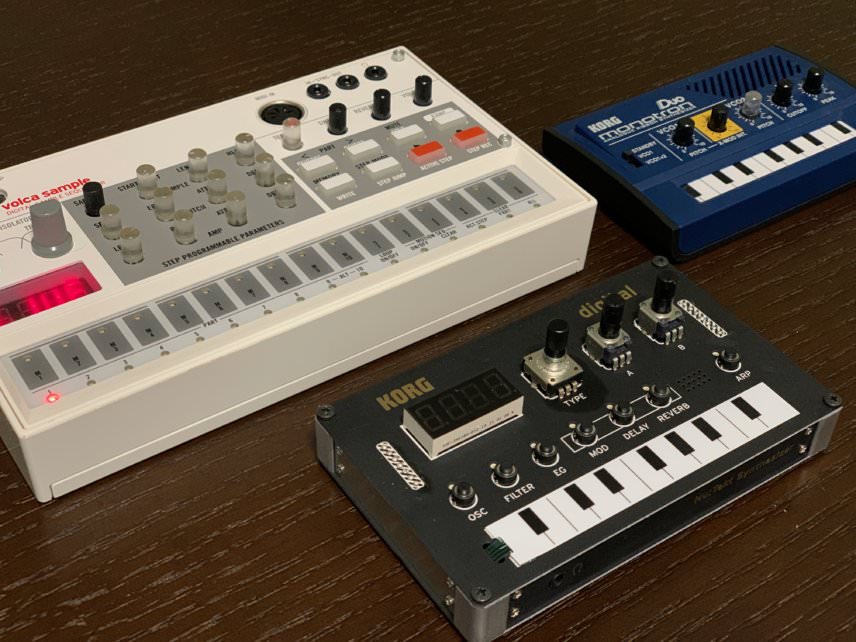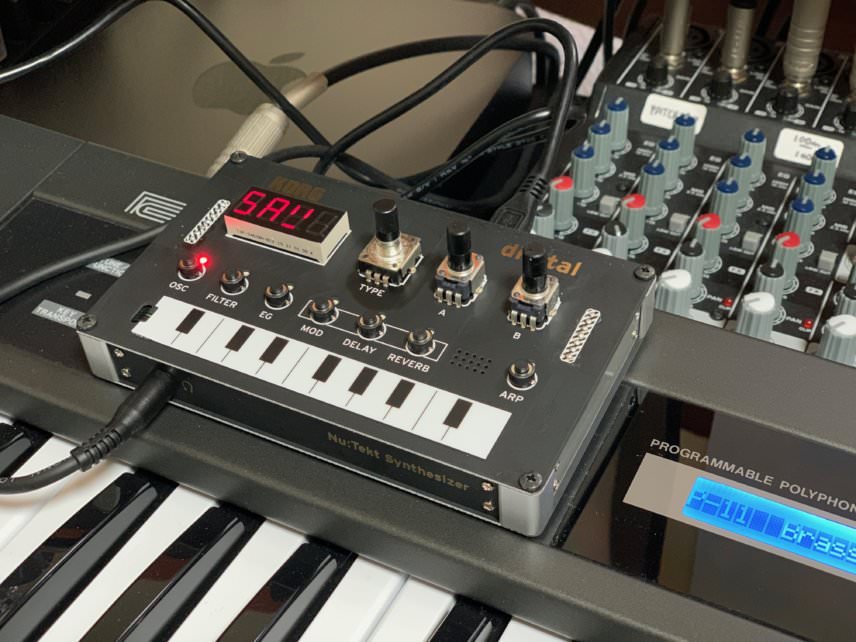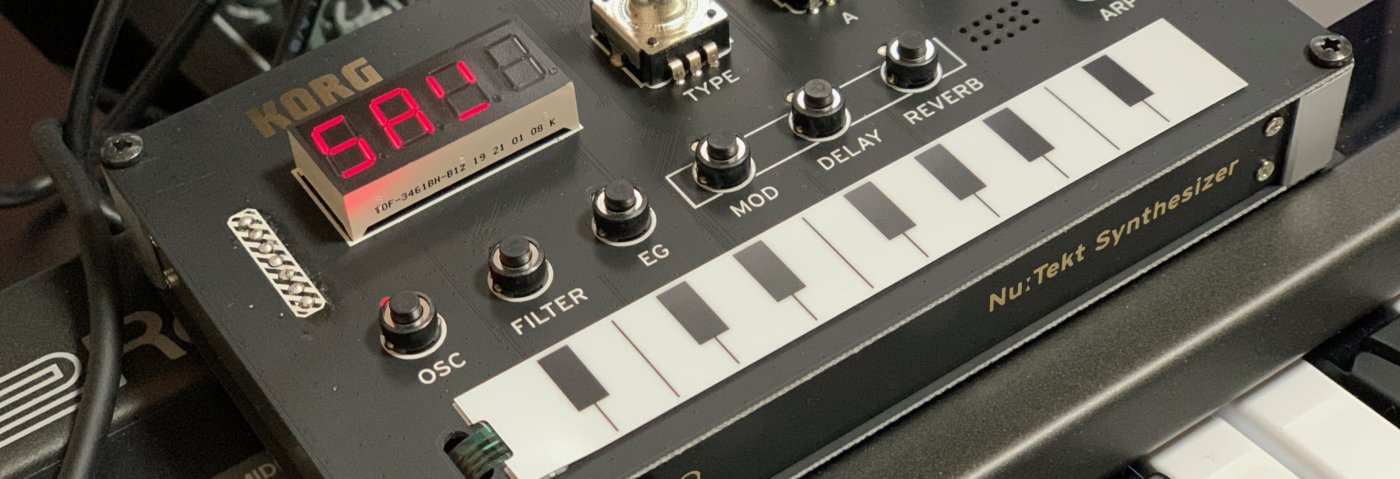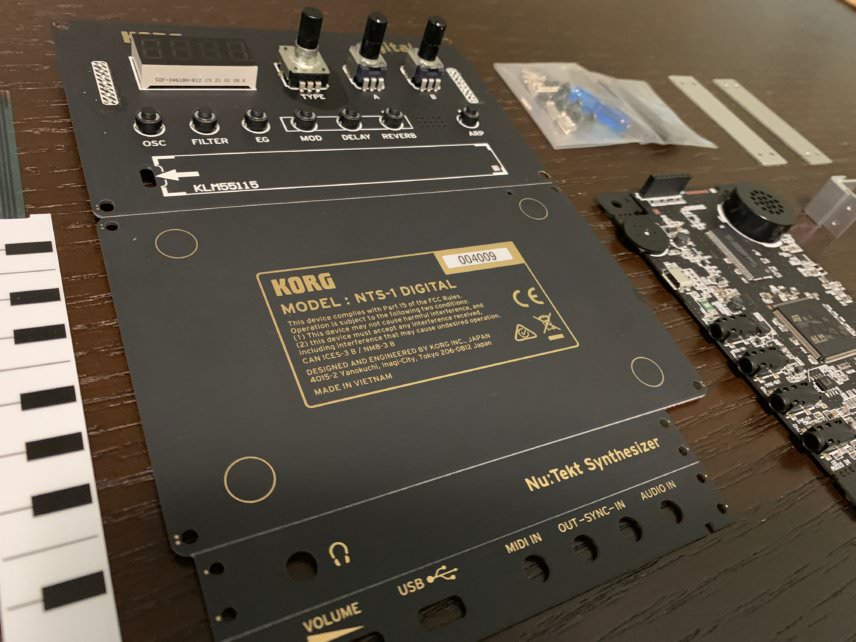Korg’s NTS-1 puts the digital oscillator from the Prologue and effects section from the Minilogue XD in a very small synthesizer that you put together yourself. Is this a case of size doesn’t matter?
Of the big three Japanese synthesizer manufacturers—Roland, Yamaha, and Korg—Korg have often been the ones to do things a little differently. They were the first to re-release a classic piece of kit (the MS-20 Mini, which also helped kickstart the analogue Renaissance we’re still enjoying). They have also helped close the gap between manufacturer and end-user, with modable gear (Volca Beats) and do-it-yourself kits (MS-20 Kit). Now they’ve started a new line of kit-based project gear called Nu:Tekt, with the NTS-1 being the initial release.
The Overview
The NTS-1 is a monophonic, single oscillator synth. It’s essentially the digital oscillator section plucked from the Prologue and Minilogue XD synths and stuck in a little box that you put together yourself. There are four analogue modelling waveforms on board (sawtooth, square, triangle, and VPM, or variable phase modulation) plus the logue SDK open source oscillator (more on this later).
Given that the NTS-1 is only slightly bigger than a Monotron, you’d be forgiven for thinking it was limited in sonic scope, but it’s actually rather flexible. Along with the aforementioned waveforms, there’s a resonant multimode filter. It’s digital of course but still capable of some juicy tones. There’s also an interesting selection of envelopes, with a number of configurations (ADSR, AHR, AR, etc.) including a loopable one, which sounds particularly mad with the arpeggiator running. That arpeggiator is latchable and syncable to external clock via the Volca-style sync in jack. It can also do sync out.
Notes are playable via the connected ribbon controller, and while it’s a little more responsive than the Monotron’s, it still leaves a lot to be desired in terms of control. Better to use one of the MIDI options, either USB (which also provides power) or break-out MIDI adapter. Note that there are two kinds of MIDI adapter and the NTS-1 uses type A (not included), which apparently is not the kind that we had to hand. MIDI over USB worked without a hitch though, and even output MIDI notes from the ribbon controller.
Assembling The Kit
Before you can use it, though, you have to put it together. When you open the box, you’re faced with a sheet of panels, two PCB boards, and a small bag of screws. It’s a little intimidating—the chance for possibly messing up and ruining your new synth feels very real—but in reality it’s not that difficult. There’s no soldering involved, the panels are stiff and come apart easily enough, and the PCBs slot together in an obvious way. We would recommend taking your time with this and reading the instructions thoroughly, however, particularly when it comes to inserting the ribbon strip into its port. The port needs to be unlocked first and it’s not easy to tell what state it’s in, nor is it easy to get a hold of. Pro tip: don’t trim your fingernails just before assembly. Also you may want to use your own screwdriver. While the kit comes with one, it’s extremely small.
Open Source Oscillators
As mentioned before, the NTS allows for users to import up to 16 custom oscillators based on the logue SDK open source development platform. It comes bundled with one, a wavetable oscillator, and many more can be found online in free, donation, and paid formats. We particularly liked the donationware Cain CZ oscillator, which uses phase modulation to create Casio CZ-style tones. Mutable Instruments fans will be pleased to know that someone has ported the open-source waveforms from Braids into the logue SDK format, and they are of course free.

Effects
We’d be doing everyone a disservice to not mention the effects section in the NTS-1, as it is very impressive indeed. Based on those from the Minilogue XD, the NTS-1 has a large number of great-sounding reverbs, delays, and modulation effects. They are uniformly excellent; the reverbs shimmery, the delays epic when necessary, the modulation effects such as ensemble and phaser deep and swimmy. It’s not an overstatement to say that these effects make the instrument.

As with the oscillators, you can also load in third-party effects, with 16 slots for modulation and eight each for reverb and delay. While there are many available, we were especially impressed with the ones on offer from plugin developer Sinevibes. While the Albedo granular cloud reverb is particularly powerful, we also liked the through-zero flanger Dipole, frequency shifter Shift, and SVF, a four-pole state variable filter, which is handy as the built-in filter does not affect external audio.
Yes, NTS-1 accepts external audio, making this little box not only a fun synth but also a powerful external effects processor. We ran a Behringer Crave through it and were very impressed with the results.
Final Verdict
The Korg Nu:Tekt NTS-1 is a very fun little synth with quite a lot to offer. It is rather small, it has to be said, and button-pushing can be a little fiddly, especially as you have to hold it down with one hand to keep it from moving around. It’s also a little on the fragile side—you likely won’t be taking this one on the road. But, at around £99, you get a lot of instrument for the price.
It’s nice to see more digital options at this lower end of the price spectrum as well, sitting on the same shelf as Modal Craftsynth 2.0 (£120) and Arturia Microfreak (£239). While these do some of the same things as the NTS-1, particularly wavetable, the Korg’s offering has quirks of its own. And dare we say the effects section alone make it worth the price.
The NTS-1 is loads of fun, gloriously and grittily digital, and the effects are—for this price point—nothing short of astonishing. It’s also very expandable, making it something of an endless synthesizer. At this price, it’s really a no-brainer. If you’re looking for something a little out of the ordinary to spice up your tracks, or even if you just need a hardware effects processor, the NTS-1 should be high on your wish list.
*Attack Magazine is supported by its audience. When you purchase through links on our site, we may earn an affiliate commission. Learn more.

